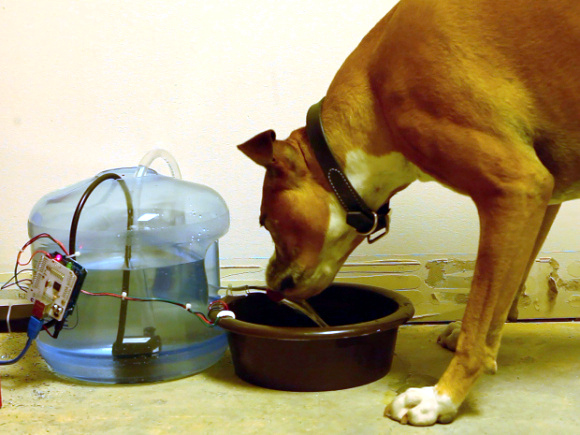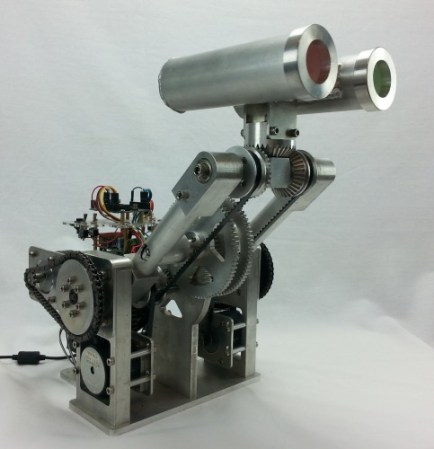This weekend’s Make project is a great one for pet owners — an automatic water bowl refilling device!
It’s a fairly simple build, utilizing an old water jug, an Arduino, an aquarium pump, and some home-made water sensors. As always, MAKE has a very thorough guide, and the estimated build time is only an hour or two. They even threw in the ability to Tweet it’s status, including when the reservoir is empty.
But are we over-complicating this? A gravity based water feeder using the jug could work just as well. Sure, you wouldn’t get Twitter updates, but we hope you’re around your pets long enough to know when they’re thirsty.
A more refined version of this could include a solenoid water valve tapped into your house, eliminating the need of the reservoir and making this project a bit more useful. But even that might be a bit much, do we really need the Arduino? What about a spring-loaded water bowl that breaks a contact when the bowl is empty? Hook that up to a 5 second timer relay controlling the water valve, and you’ve simplified the project quite a bit!
After the break, check out the video to get some more ideas!













